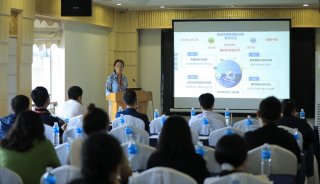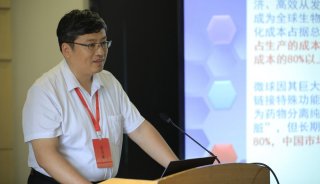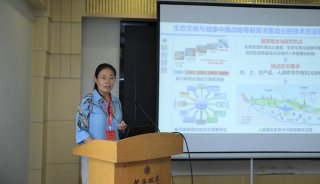土壤酶化學計量研究進展(二)
?


土壤(A)和凋落物(B)胞外酶活性對氮沉降的響應
?
該文的通信作者Robert L. Sinsabaugh更是土壤酶活研究領域的領軍人物,于08年在Ecology Letters上報道了全球尺度的土壤酶活化學計量研究成果(Robert L. Sinsabaugh, et al., 2008);于09年在Nature上報道了土壤和沉積物中微生物有機養分獲取的土壤酶化學計量研究成果;于12年Annual Review of Ecology and Systematics上回顧了土壤酶化學計量與生態學理論。
近期,中國科學院成都生物研究所朱曉敏等(Zhu Xiaomin, et al., 2020)以“Differential
effects of N addition on the stoichiometry of microbes andextracellular
enzymes in the rhizosphere and bulk soils of an alpine shrubland”為題,在Plant
Soil報道了氮添加對微生物和胞外酶化學計量的影響。胞外酶活性測量采用了K.R.
Saiya-Cork等創建的酶活反應體系,共計測量了高寒灌叢根際土和非根際土的4種胞外酶活性,其中,一種為有機碳分解酶(β-1,4-glucosidase,BG),兩種為有機氮分解酶(L-leucine
aminopeptudase,LAP;β-N-acetylglucosaminidase,NAG),一種為有機磷分解酶(acid
phosphate,AP),用于評價微生物的營養狀態。用Ln(BG): Ln(LAP+NAG),Ln(BG):
LN(AP),Ln(LAP+NAG): Ln(AP)分別表示胞外酶的C:N,C:P,N:P化學計量比(Sinsabaugh et al., 2009)。

結果表明,氮添加顯著增加根際土的C、N、P分解酶活性,其中P分解酶活性增加最多,導致土壤酶的C:P和N:P比例顯著下降。根際土壤酶N:P比與植物、土壤和微生物的N:P比呈負相關,說明在施氮條件下,增加植物和微生物對P的吸收,可能會逐漸加劇根際P限制。氮添加顯著提高非根際土C分解酶活性,并降低土壤酶的C:N比。同時,非根際土壤酶C:N比與土壤C:N比呈負相關,但與植物C:N比無關,說明氮添加可能加劇非根際微生物C限制。
?

氮添加對根際土和非根際土C、N、P獲取土壤胞外酶活性及其化學計量的影響
氮添加對根際土和非根際土的微生物生物量和酶活的影響以及地上-地下化學計量的相關性
關于土壤酶化學計量能否真實確定微生物的養分限制狀態,也存在爭議,一些研究結果與預期不符。最近,日本林業和森林產品研究所的Taiki Mori?(Taiki Mori, 2020)在Soil Biology and Biochemistry上以“Does ecoenzymatic stoichiometry really determine microbial nutrientlimitations?”為題,闡述了個人對土壤酶化學計量能否真實確定微生物的養分限制狀態爭議的觀點,贊同土壤酶化學計量理論,但鑒于纖維素只能提供C源,而幾丁質、肽聚糖、蛋白質等既是N源,也是C源,如果幾丁質、肽聚糖、蛋白質等作為主要C源,就需要增加以往表征N限制的酶(LAP、NAG等)去獲取C。基于該認識,提出了相應的概念模型。
?

區分基質的土壤酶化學計量理論概念模型
參考文獻
1. Dick W A.?Development of a soil enzyme reaction assay[J]. Methods of soil enzymology, 2011, 9: 71-84.
2. Saiya-Cork K R, Sinsabaugh R L, Zak D R.?The effects of long term nitrogen deposition on extracellular enzyme activity in an Acer saccharum forest soil[J]. Soil Biology and Biochemistry, 2002, 34(9): 1309-1315.
3. Sinsabaugh R L, Lauber C L, Weintraub M N, et al.?Stoichiometry of soil enzyme activity at global scale[J]. Ecology letters, 2008, 11(11): 1252-1264.
4. Sinsabaugh R L, Hill B H, Shah J J F.?Ecoenzymatic stoichiometry of microbial organic nutrient acquisition in soil and sediment[J]. Nature, 2009, 462(7274): 795-798.
5. Sinsabaugh R L, Follstad Shah J J.?Ecoenzymatic stoichiometry and ecological theory[J]. Annual Review of Ecology, Evolution, and Systematics, 2012, 43: 313-343.
6. Zhu X, Liu M, Kou Y, et al.?Differential
effects of N addition on the stoichiometry of microbes and
extracellular enzymes in the rhizosphere and bulk soils of an alpine
shrubland[J]. Plant and Soil, 2020: 1-17.
7. Mori T.?Does ecoenzymatic stoichiometry really determine microbial nutrient limitations?[J]. Soil Biology and Biochemistry, 2020: 107816.
-
焦點事件
















